Microsoft Surface Pro 2 Review
by Anand Lal Shimpi on October 21, 2013 12:01 AM EST- Posted in
- Tablets
- Microsoft
- Mobile
- Surface
- Surface Pro 2

When Microsoft introduced its first Surface devices last year, it did so in a staggered fashion. Surface RT showed up first, then four months later Surface Pro went on sale. Despite sharing a lot of the same DNA, the response to Surface Pro was much better than what we saw with Surface RT. While Surface RT suffered a lot from being a new platform that lacked the support of decades of Windows applications, Surface Pro had no such issue.
Instead, Surface Pro offered the promise of a tablet that could potentially replace your notebook and desktop as well. Microsoft’s strategy with Surface Pro mimicked the market transition we saw years earlier. The notebooks that replaced desktops over the 2000s did so by being able to work as both notebooks or desktops. Similarly, Microsoft hoped that Surface Pro could act as both a tablet and a notebook for those users who didn’t want to carry two devices.
By and large, Microsoft was successful in achieving that vision. Although as with all devices that attempt to fulfill multiple roles, Surface Pro presented a set of tradeoffs. It wasn’t as portable and didn’t last as long on a single charge as a conventional ARM based tablet. It also didn’t have the same keyboard or in-lap experience as a PC notebook. You got a compromised experience on both sides of the fence. Just as with Surface 2, Microsoft is committed to a more aggressive update cadence to its Surface Pro hardware as well. Here we are, almost 9 months since availability of the original Surface Pro, reviewing its successor.
Unlike Surface 2, Surface Pro 2 shows almost no signs of change on the outside. It reminds me of the pre-iPhone/iPad era where expecting a dramatic chassis redesign a year after introduction was considered ludicrous. Surface Pro 2 keeps the exact same finish, dimensions and weight as the original Surface Pro.
It’s unfortunate given how much thinner and lighter the device could be this time around. I suspect Microsoft has a three year plan for Surface Pro. It could move to a thinner design this year and drop performance by going to a 6W Haswell SKU, keep performance the same but pay a thermal penalty with a 15W Haswell or wait until Broadwell next year to shrink the chassis (hopefully without much of an associated performance reduction). I can understand why Microsoft chose the latter, it’s still just frustrating as I would’ve loved a thinner/lighter Surface Pro.
I also lament Microsoft’s decision to update the VaporMg finish on Surface 2 but not on Surface Pro 2. I really like the new finish both in feel and in color. Surface 2’s resistance to picking up fingerprints is an added bonus on that front. Alas, it’s an update that I’m guessing the Surface Pro lineup won’t get until next year.
Surface Pro 2 also retains the same front and rear facing cameras as its predecessor, both 1.2MP units and it doesn’t get the new 3.5/5MP sensors from Surface 2.
You still get a bundled Wacom active digitizer with Surface Pro 2, just like with the original. I’m hardly a creative professional, but from what I’ve experienced with the pen it’s really a great addition for those folks who are. I’ll point you at none other than Gabe from Penny Arcade who did a great post on an artist’s perspective of using the Surface Pro’s stylus. Spoiler alert: he likes it a lot. If I illustrated for a living, I probably would too.
Surface Pro 2 inherits the same kickstand and branding decisions as Surface 2. As I mentioned in my Surface 2 review, the new 2-stage kickstand is awesome and a huge improvement over its predecessor. The kickstand now opens at 24 and 40-degree angles, the latter enables more comfortable use when you’re not typing at a desk. The new kickstand also ditches the Windows 8 logo in favor of the Surface logo across the back.
Finally, Surface Pro 2 does get the new 1080p panel from Surface 2 (albeit a brighter implementation). There’s no improvement in resolution compared to the original Surface Pro, but color accuracy is a lot better.
I did notice an odd display corruption issue on Surface Pro 2 when waking up from sleep (pictured above). Resetting the device or sometimes just doing another sleep/wake cycle was enough to fix it. Microsoft tells me it’s aware of the problem and plans to issue an update shortly to address it. We only got review samples a few days prior to the NDA lift, I get the impression that it was a lot of work to get final hardware out the door in time for this launch. Update: Microsoft traced the issue back to a later revision of an Intel graphics driver. After release, a Surface Pro 2 update rolled back to an earlier optimized driver that no longer exhibits the display corruption on wake issue.
Internally we see where Microsoft spent most of its time updating Surface Pro. It all starts with an upgrade to Haswell. Surface Pro 2 features Intel’s Core i5-4200U, a dual-core 1.6GHz 15W Haswell part with Hyper Threading, 3MB of shared L3 cache, and a max turbo frequency of 2.6GHz. Just like last time, I had no issues hitting 2.6GHz on Surface Pro 2. I would see 2.3GHz far more frequently however.
As Surface Pro 2 is rather thick by Ultrabook standards, you get the full performance of the 4200U. I ran a multithreaded Cinebench 11.5 test on Surface Pro 2, comparing it to Apple’s 13-inch 2013 MacBook Air under Windows 8. The two deliver identical performance, just in different form factors:
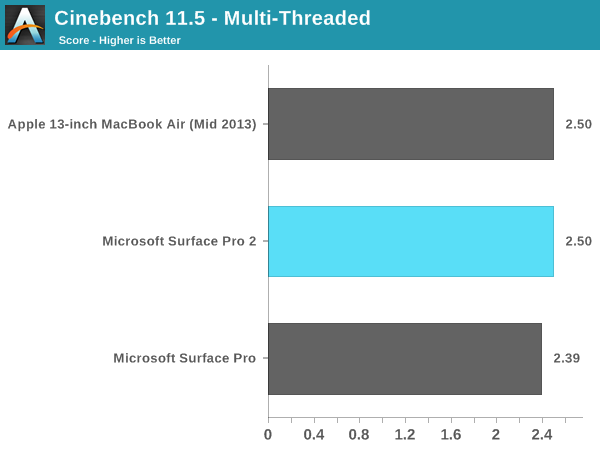
The 4200U is nearly identical to the base CPU you get in the new 2013 MacBook Airs, the only difference being that you get Intel’s HD 4400 graphics vs. HD 5000. Apple’s obsession with graphics performance explains the difference, although it’s disappointing to see Microsoft not sharing the same obsession. To Microsoft’s credit the difference between Intel’s HD 5000 and HD 4400, when constrained by a 15W TDP, just isn’t very large. The real benefit to going with HD 5000 over HD 4400 has to do with power consumption, since you can get similar performance at lower frequencies/voltages thanks to a doubling of the number of EUs in HD 5000.
It’s not just the CPU that’s changed this time around, Microsoft did extensive work under the hood of Surface Pro 2 to further reduce power consumption. Haswell ULT supports LPDDR3, a feature that Microsoft chose to take advantage of in pursuit of lowering power consumption. All other components on the motherboard are also optimized for power consumption. The result is a device that looks like and is cooled similarly to its predecessor, but is appreciably cooler/quieter in operation. While the original Surface Pro would spin its fans up on a regular basis, Surface Pro 2 is far more hesitant to do the same thing. In what I’d consider to be light to medium tablet use, Surface Pro 2 behaves like a passively cooled device. When the fans do ramp up, they aren’t any louder than before as far as I can tell.

USB3 transfers to an internal mSATA SSD
Just like the original, Surface Pro 2 retains a full SSD rather than an eMMC solution. We’re still dealing with an mSATA based drive here, but Microsoft expanded the available capacity options. The combination of DRAM/SSD/price options are in the table below:
| Microsoft Surface Pro 2 Storage Configurations | ||||||||||
| SSD | 64GB | 128GB | 256GB | 512GB | ||||||
| LPDDR3 Configuration | 4GB | 4GB | 8GB | 8GB | ||||||
| Price | $899 | $999 | $1299 | $1799 | ||||||
The most interesting options are unfortunately the more expensive models. I think the sweet spot is likely the 8GB/256GB version, which also happens to be how my review sample was configured. Unfortunately the LPDDR3 is soldered on board (as with all modern Ultrabooks) so that’s not user upgradeable. The SSD is technically serviceable, but there’s a ton of risk associated with doing so as you have to take apart your Surface Pro 2 to do so. Once again Microsoft refuses to equip Surface Pro with a Thunderbolt port, which would help greatly in dealing with high performance storage expansion concerns. There is still a USB 3.0 port at least.
Surface Pro 2 is compatible with all of the new dock accessories, including the new touch and type covers. I went through the improvements to both of those in our Surface 2 review already, but in short they are great. I still prefer the new type cover as I can type a lot faster on it, but the new touch cover is significantly better than its predecessor. Neither is included in the cost of a Surface Pro 2, so factor in another $119 - $129 depending on which cover you end up with. I noticed the same trackpad disappearing issues on Surface Pro 2 as I did on Surface 2, Microsoft claims a fix is in the works.
| Microsoft Surface Pro Comparison | ||||||||
| Surface Pro 2 | Surface Pro | |||||||
| Dimensions | 10.81 x 6.81 x 0.53" | 10.81 x 6.81 x 0.53" | ||||||
| Display | 10.6-inch 1920 x 1080 w/ Improved Color Accuracy | 10.6-inch 1920 x 1080 PLS | ||||||
| Weight | 2.0 lbs | 2.0 lbs | ||||||
| Processor | Core i5-4200U with HD4400 Graphics (15W Haswell ULT) |
Core i5-3317U with HD4000 Graphics (17W Ivy Bridge) |
||||||
| Cameras | 1.2MP/1.2MP (front/rear) | 1.2MP/1.2MP (front/rear) | ||||||
| Connectivity | WiFi | WiFi | ||||||
| Memory | 4GB or 8GB LPDDR3 | 4GB | ||||||
| Storage |
64 or 128GB (4GB RAM) 256GB or 512GB (8GB RAM) |
64GB or 128GB | ||||||
| Battery | 42.0 Wh | 42.0 Wh | ||||||
| Starting Price | $899 | $799 | ||||||
Surface Pro 2 ships with Windows 8.1 Pro x64. Since there's no connected standby 64-bit version of Windows 8/8.1 yet, Surface Pro 2 ships without the feature. It also continues to behave more notebook like in the sleep/wake sense as a result. There's a delay between when you press the power/lock button and when you'll see the tablet respond as the system comes out of its sleep state. Ironically Surface Pro 2 comes with nothing more than a link to try Office 2013, while Surface 2 comes with a free copy of the Home & Student edition.


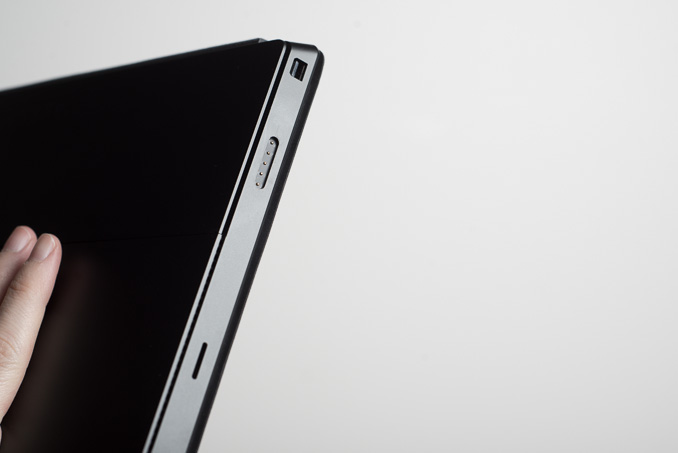
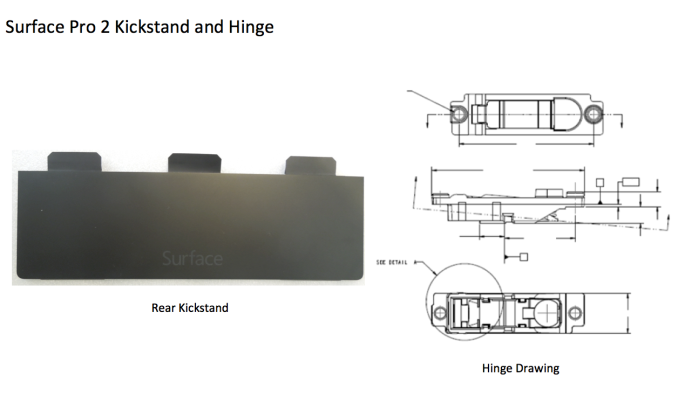
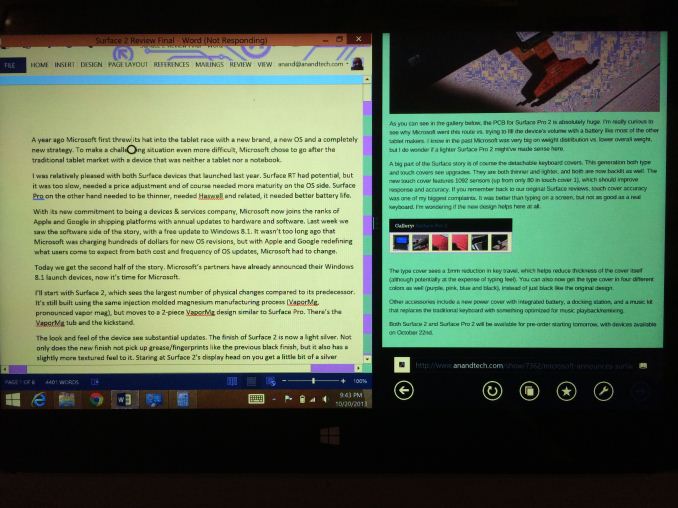


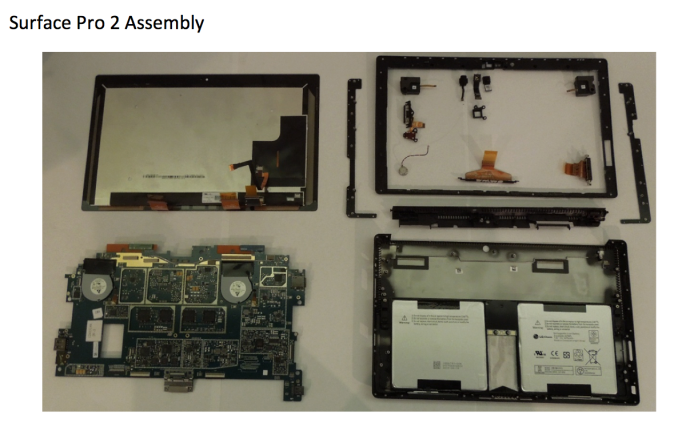
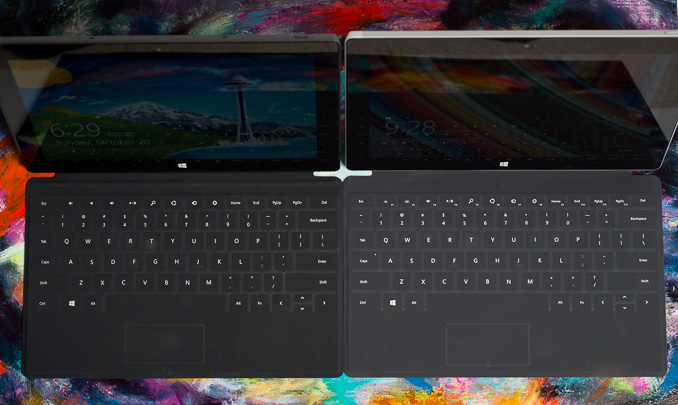








277 Comments
View All Comments
Freakie - Monday, October 21, 2013 - link
I don't think they're playing it safe, or trying to get larger profit margins for that matter, I think that if they added all the features and specs that most of us would agree should have been in the Pro 2 (better cameras for example) then it would detract from the Surface 2 and Microsoft refuses to give up Windows RT. It's just them try to save an obviously sinking ship. I wish they just let it sink and put the Surface Pro 2 where it should be.But then again, that would probably upset many OEM's who don't make devices as good as the Pro 2 and so they have another incentive there to not do it.
melgross - Monday, October 21, 2013 - link
It would also have raised the price, and it's already pretty expensive as it is.I remember that just before the iPad first came out, there were surveys that showed
that only a small percentage of people would buy a tablet if it cost more than $800. That was for any tablet, running any OS. This is well over that, particularly once you add the required keyboard/cover.
And now that the trend is to think that $499 for a full size tablet is on the high side, the price for those is way too high already. I doubt that most people would ever think that a tablet, any tablet, is worth more than a notebook, touchscreen or not.
Nuno Simões - Monday, October 21, 2013 - link
This the review for the Surface Pro, wich is an ultrabook, not a tablet.Rezurecta - Monday, October 21, 2013 - link
Yes, you can say its driving the ecosystem in the right place. The productive tablet is where we need to be. Too much consumption with traditional tablets.Babar Javied - Monday, October 21, 2013 - link
Why use a "productive tablet" when you can get an ultra-book for the same price yet with better specs and more battery life?What is the difference between a productive tablet and an ultra-book anyway??
rituraj - Monday, October 21, 2013 - link
The difference is the digitizer. I think if someone is not interested in the pen input, this device is not for them AT ALL. It's too heavy to be used as a consumption device where you can hold it above your head on the bed, at the same time it is uncomfortable for productivity purposes if that means a lot of typing. But, if productivity means using the pen input, then this is a killer device. Just read the review by Gabe as suggested by Anand in the intro page and it is clear that it is almost a blessing for people who ink for a living.here is a thought. Although this device has been presented as a general consumer device, I seriously doubt it. People wanting this much power in a tablet are not a lot in number. They are professional artists & designers like Gabe from Penny Arcade. Engineers, Teachers, Engineering and designing students may also crave for such a device although the price is quite high for students. So if the pen means very little for someone this is just not the thing to get.
backbydemand - Monday, October 21, 2013 - link
"What is the difference between a productive tablet and an ultra-book anyway??"Are you brain dead? When was the last time you could take a keyboard off your ultrabook and use it as a tablet?
cknobman - Monday, October 21, 2013 - link
If your comparing a Nexus to the Surface Pro you have no clue what your talking about.As an owner of a Surface Pro, Surface RT, and a Google Transformer tablet I can tell you in no way does an Android tablet come close to a Surface Pro much less a Surface RT.
The Surface family are brilliant products that actually do what I want out of a tablet. They offer a great platform for consuming AND creating content.
Only knock I can give either Surface is Microsoft is pricing them a little to high. Android is garbage when it comes to something productive and the marketplace is such a huge sh!tpile that I gave up wasting my time sifting through the apps because every single app (even if it starts out great) turns into a resource hog always running in the background transmitting data even if you tell it not to.
Frenetic Pony - Monday, October 21, 2013 - link
The Surface Pro (1) was perfect for me, last year. Had I waited 4 months and known about it I would have gotten one instead of the current ultrabook I'm typing this on. It was priced perfectly competitively, and the only real product in it's category (very high performance tablet thing) that even existed.The 2 is still the only product in it's category, but with a drop in TDP I'm disappointed it's not thinner and lighter. Since I'm planning on replacing my ultrabook in the next two years I do agree that another update such as this one would be a disappointment. Here's to a thinner and lighter Surface Pro next year, preferably with a large improvement in GPU performance considering that's the big Broadwell performance upgrade.
CecileWamsley - Monday, October 28, 2013 - link
My Uncle Riley recently got a great Cadillac CTS-V Wagon just by working online with a macbook... check out the post right here... http://smal.ly/8wUo2